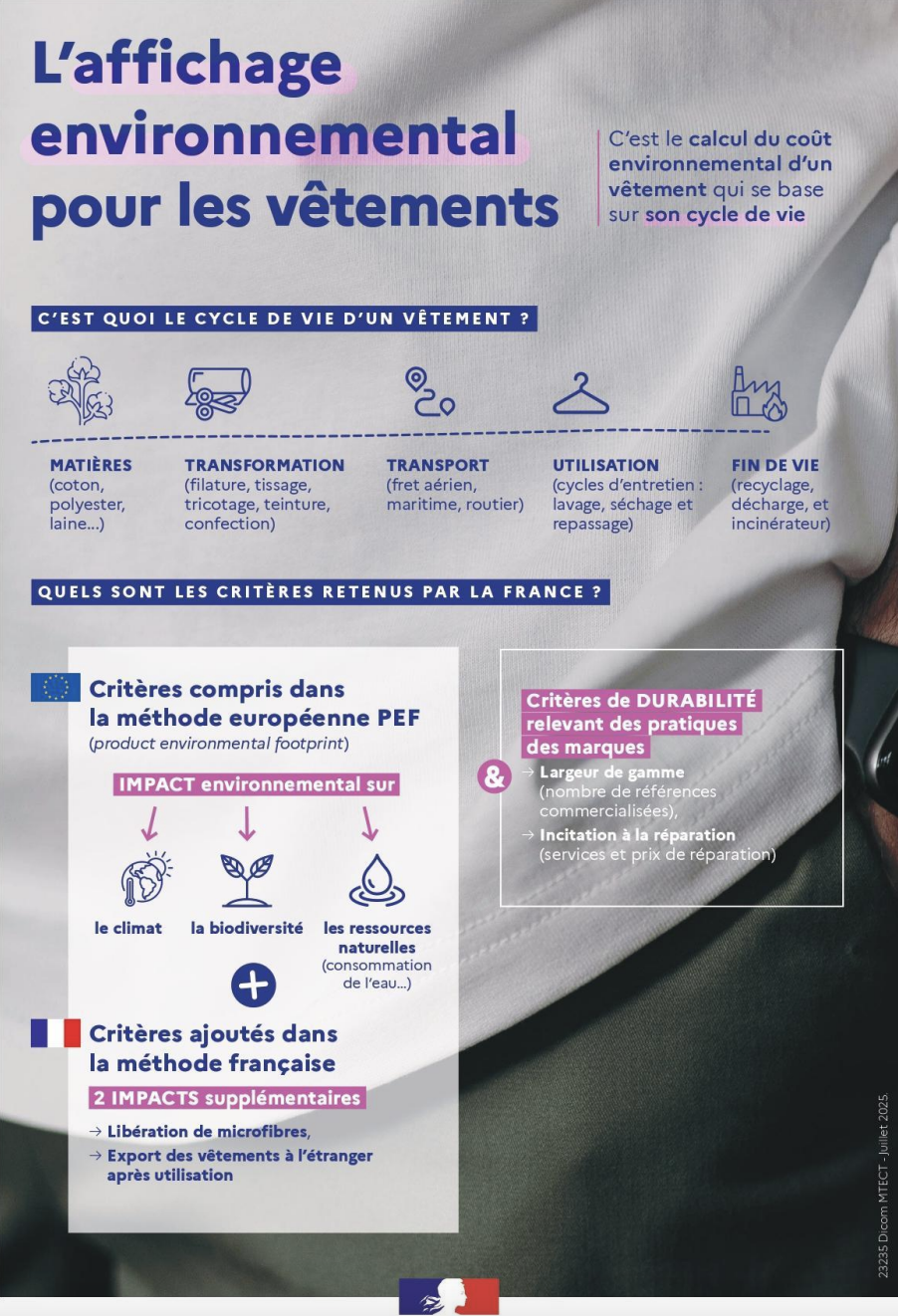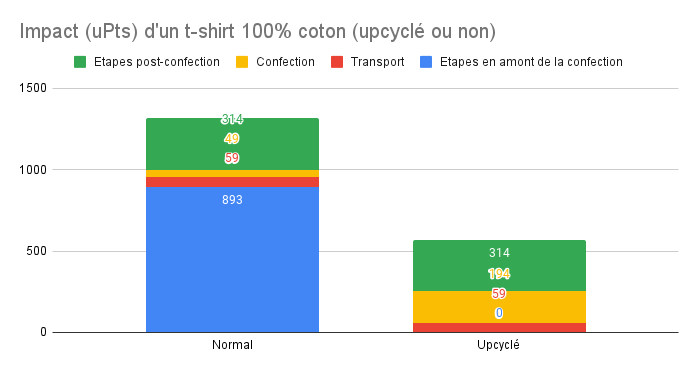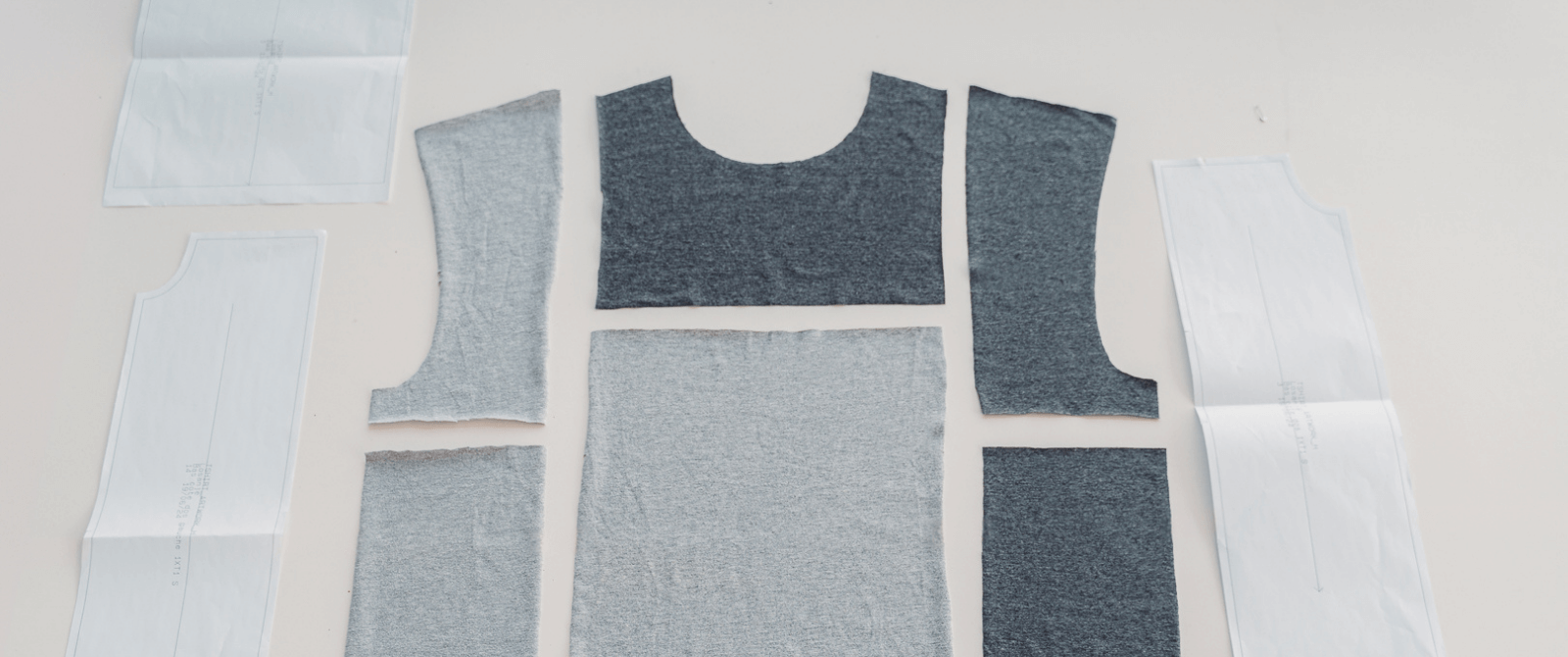Textile environmental labelling: measuring the true cost of clothing
A new tool to make fashion more transparent, reduce its ecological footprint and promote eco-design, upcycling and remanufacturing.

your
textile products with us?
A turning point for more sustainable and transparent fashion
Since October 1, 2025, France has been officially rolling out theenvironmental cost of clothing display, a first-of-its-kind public scheme designed by the Ministry of Ecological Transition andADEME.
The aim is to enable consumers to understand the real impact of their clothing, and brands to promote theireco-design, local production andupcycling choices.
What is textile environmental cost?
Environmental labelling consists of affixing a number of impact points to a textile product, indicating its overall environmental cost.
This figure, calculated using a scientific method, reflects the cumulative impact of a garment throughout its life cycle: from fiber to end-of-life.
It's a transparency tool, comparable to an "ecological price".
The higher the score, the more the garment costs the planet.
Example:
- Organic cotton T-shirt: ~380 points
- Polyester T-shirt (fast fashion): ~1000 points

A method based on Life Cycle Assessment (LCA)
The calculation is based on the PEF (Product Environmental Footprint) methodology developed by the European Commission, supplemented by the French method Ecobalyse.
It takes into account :
- 16 impact categories (climate change, water pollution, toxicity, natural resources, etc.);
- Two non-LCA additions: microfiber emissions and exporting unused clothing outside Europe;
- A durability coefficient, which modulates the score according to the garment's longevity.
Each brand must declare its data on the official portal to guarantee the reliability and comparability of results.
Upcycling and remanufacturing: a powerful lever for reducing impact
Definition
Upcycling (or remanufacturing) is the upward transformation of an existing textile or garment - fabric scraps, unsold or used garments - to create a new, higher-value product.
It's a creative recycling of materials already in circulation.
Unlike conventional recycling, which degrades the material, upcycling extends the life of textiles without the need for complete remanufacturing.
Modeling in Ecobalyse
The official methodology specifies that :
- A garment is considered to be remanufactured when 90% or more of its material comes from finished products already in use.
- The most impactful stages of the life cycle (spinning, weaving, finishing) are neutralized, as their impact is already "amortized".
- Only remanufacturing operations remain: packaging, transport and distribution.
- Complexity ranges from Low (between 5 and 15 minutes) to High (between 30 and 60 minutes). It is generally higher, reflecting longer, more meticulous work.
Result: a 100% upcycled cotton T-shirt shows an average reduction of -57% in its overall impact, according to the assumptions of the Ecobalyse tool.
Challenges and prospects
Upcycling today represents one of the most concrete ways of reducing the environmental impact of textiles.
By reusing existing materials, it eliminates several high-impact stages in the life cycle (spinning, weaving, finishing) while promoting a more sober, circular approach to production.
Thanks to advances in sorting, cutting and recycling technologies,industrial upcycling is spreading on a large scale, while retaining the creativity and quality inherent to this approach.
By including remanufacturing (or upcycling) in the national methodology, France fully recognizes this practice as a strategic pillar of circular fashion, reconciling innovation, traceability and impact reduction.

A display for everyone: consumers and brands
For consumers
This display :
- makes the real impact of clothing visible,
- helps you compare products (thanks to total cost and cost per 100 g),
- promotes sobriety: buy less, but better.
For brands
It's a decision-making tool:
- Identify levers for improvement (materials, logistics, sustainability) ;
- Highlight remanufacturing or circular production efforts;
- Anticipate future European regulations.
The display of environmental costs thus becomes a strategic lever as much as an ecological indicator.

Towards more responsible European fashion
Displaying the environmental cost of textiles marks a key step towards transparency.
Adopted by several pioneering French brands (Loom, Soeur, Rossignol, etc.) and validated by the European Commission, it could become the continental benchmark by 2027.
For the moment, this display is voluntary, but by October 2026, if a brand does not publish its score, third parties (retailers, NGOs, platforms, etc.) will be able to calculate and publish it for it.
Ideas, materials,
a project? We'd love to hear from you.
At Losanje, we can help you create responsible textile products, whether you have materials to recycle or not.
You might like
...




